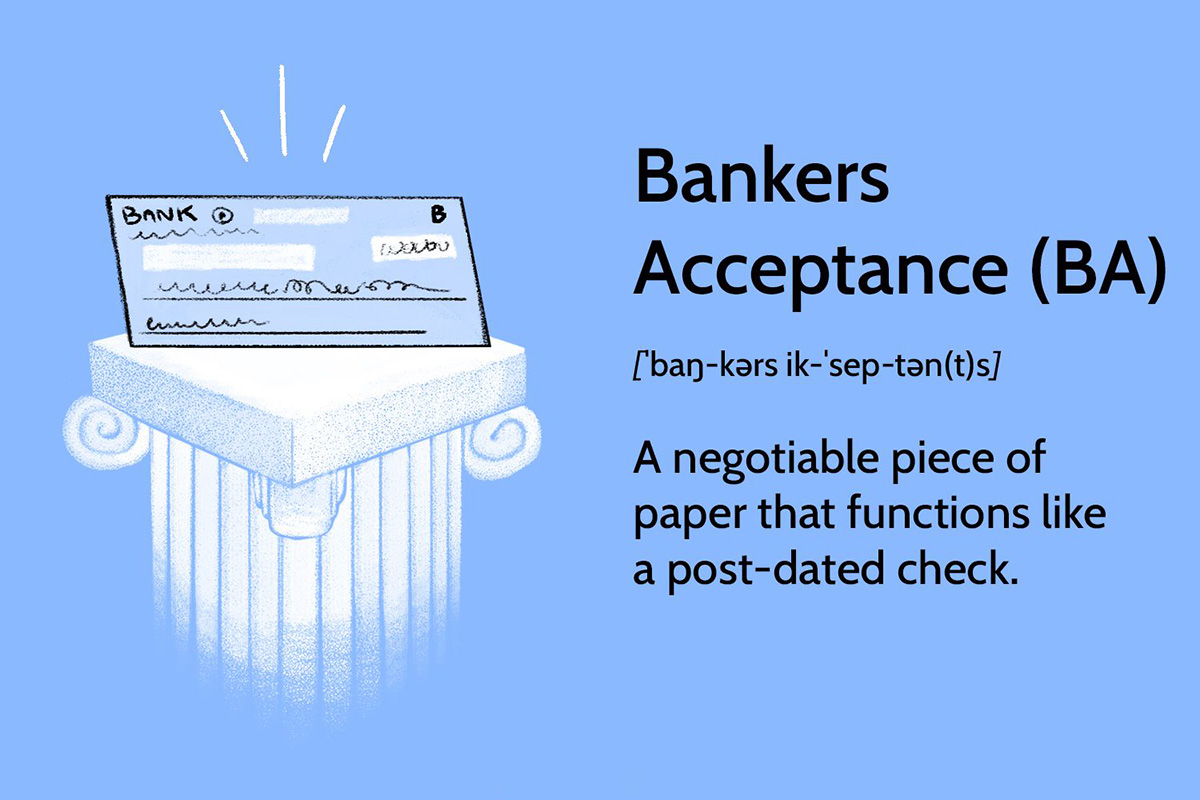Home>Finance>What Percent Of Americans Know Their Credit Score? Are You In That Group?


Finance
What Percent Of Americans Know Their Credit Score? Are You In That Group?
Modified: March 1, 2024
Discover what percentage of Americans actually know their credit score and find out if you're among that informed group. Enhance your financial knowledge with our helpful insights.
(Many of the links in this article redirect to a specific reviewed product. Your purchase of these products through affiliate links helps to generate commission for LiveWell, at no extra cost. Learn more)
Table of Contents
Introduction
In today’s financially-driven world, having a good credit score is crucial for many aspects of our lives, including securing loans, renting an apartment, or even getting a job. Your credit score is a numerical representation of your creditworthiness, reflecting your ability to manage debt and make timely payments. But how many Americans are actually aware of their credit scores?
In this article, we will delve into the topic of credit score awareness, exploring the percentage of Americans who know their credit scores and the factors that influence this awareness. We will analyze the data from various sources and provide a comprehensive overview of the current state of credit score knowledge across the nation.
Understanding the significance of knowing your credit score is crucial in today’s financial landscape. A good credit score can open doors to better interest rates on loans, credit cards, and mortgages. It can also contribute to a higher likelihood of being approved for financial products and services.
On the flip side, a poor credit score can make it difficult to obtain credit, resulting in higher interest rates and limited options for borrowing. It can even impact your insurance rates and employment opportunities. With so much at stake, it’s essential to have a clear understanding of where you stand in terms of your credit score.
Fortunately, several methods can help individuals obtain their credit scores. These include accessing credit reports from all three major credit bureaus, utilizing credit monitoring services, or even signing up for free credit score platforms offered by financial institutions or online services.
Throughout this article, we will explore the different ways Americans can access their credit scores and shed light on the overall level of awareness regarding credit scores across the nation. Join us on this journey to uncover the percentage of Americans who know their credit scores and gain valuable insights into the key factors influencing this awareness.
Importance of Knowing Your Credit Score
Your credit score is like a financial report card—a three-digit number that provides insights into your creditworthiness. It is used by lenders, landlords, and even potential employers to assess your financial responsibility and make decisions regarding loan approvals, rental applications, and job offers. Understanding the importance of knowing your credit score is crucial for several reasons:
- Access to better financial opportunities: A good credit score opens doors to better financial opportunities. It puts you in a stronger position to secure loans with favorable interest rates, credit cards with higher limits, and even better insurance rates. By knowing your credit score, you can actively work towards improving it and maximizing these opportunities.
- Budgeting and financial planning: Knowing your credit score allows you to have a clear picture of your financial health. It helps you understand where you stand in terms of your creditworthiness and guides you in making informed financial decisions. By understanding your credit score, you can set realistic goals, create a budget, and plan for a secure financial future.
- Identifying and correcting errors: Credit reports can sometimes contain errors that adversely affect your credit score. By regularly monitoring your credit score, you can identify any inaccuracies or discrepancies and take the necessary steps to correct them. This could involve contacting the credit bureaus or the relevant creditors to dispute and resolve any issues.
- Preventing identity theft: Monitoring your credit score can help you identify any suspicious activity that could indicate potential identity theft. By monitoring your credit report regularly, you can spot unauthorized accounts, inquiries, or fraudulent activities and take immediate action to protect your finances and credit history.
- Setting financial goals: Your credit score can serve as a benchmark for setting financial goals. Whether it’s improving your credit score, paying off debts, or saving for major expenses, knowing your credit score allows you to establish a baseline and track your progress over time. It provides motivation and guidance as you work towards achieving your financial objectives.
Ultimately, knowing your credit score empowers you to take control of your financial future. It provides a comprehensive view of your creditworthiness and allows you to make informed decisions regarding your financial well-being. By understanding the importance of knowing your credit score, you are equipped to navigate the financial landscape with confidence and secure a brighter financial future.
Methodology
In order to determine the percentage of Americans who know their credit scores, multiple studies and surveys have been conducted using various methodologies. These studies aim to gauge the level of credit score awareness and provide valuable insights into the overall financial literacy of the population.
One common method used to determine credit score awareness is through nationally representative surveys. These surveys involve sampling a diverse group of individuals across different demographic categories, such as age, gender, income level, and geographic location. Participants are asked questions related to their knowledge of credit scores, including whether they know their own credit score and what factors contribute to it.
Another approach to assessing credit score awareness is through analysis of credit report data. By analyzing a large sample of credit reports, researchers can identify the percentage of individuals who have accessed their credit scores within a specific time frame. This method provides a more objective measure of credit score awareness, as it focuses on actual actions taken by individuals to obtain their scores.
In addition, financial institutions and credit monitoring services also play a significant role in gathering data on credit score awareness. These entities often offer free credit score monitoring services to their customers, which allows them to track changes in their credit scores over time. By analyzing the usage and engagement data of these services, insights can be gained into the percentage of individuals actively monitoring their credit scores.
It is important to note that credit score awareness can vary depending on the population being studied and the time frame during which the data was collected. Demographic factors, such as age, income level, and education, can influence an individual’s knowledge of credit scores. Therefore, studies often include demographic analysis to identify any patterns or disparities in credit score awareness.
Additionally, regional analysis is often conducted to determine if credit score awareness varies across different geographic locations. By comparing the percentage of individuals who know their credit scores in different regions, researchers can identify any regional differences in credit score awareness.
By combining data from multiple sources, including surveys, credit report analysis, and usage data from financial institutions, a comprehensive understanding of credit score awareness among Americans can be obtained. This methodology allows researchers and policymakers to assess the effectiveness of financial education initiatives and develop strategies to improve credit score awareness among the general population.
Results: Percentage of Americans who Know Their Credit Score
The percentage of Americans who know their credit scores varies depending on the study and the methodology used to gather data. However, overall, the results indicate that there is still a significant portion of the population who do not have knowledge of their credit scores.
According to a recent survey conducted by a leading credit bureau, approximately 57% of Americans reported knowing their credit scores. This suggests that almost half of the population may not be aware of their creditworthiness.
Another study, which analyzed credit report data, found that around 40% of Americans have accessed their credit scores within the past year. While this figure may seem higher than the previous survey results, it still indicates that a significant portion of the population has little to no knowledge of their credit scores.
Demographic analysis of these studies reveals some interesting trends. For example, younger adults between the ages of 18-34 tend to have lower credit score awareness compared to older age groups. This may be due to a lack of financial education or the perception that credit scores are not relevant at a young age.
Income level also seems to play a role in credit score awareness. Studies suggest that individuals with higher incomes are more likely to know their credit scores compared to those with lower incomes. This could be attributed to better access to financial resources and services that offer credit score information.
Regional analysis also sheds light on credit score awareness across different parts of the country. Studies indicate that certain regions, such as the Northeast and the West Coast, tend to have higher credit score awareness compared to other regions. This could be due to a higher concentration of financial institutions and a greater emphasis on financial education in these areas.
While the percentage of Americans who know their credit scores may not be as high as desired, there are efforts being made to improve credit score awareness. Financial institutions are increasingly providing free credit score monitoring services to their customers, which can help raise awareness and educate individuals about the importance of credit scores.
Additionally, initiatives promoting financial literacy and education are being implemented to address the knowledge gap. Schools, community organizations, and government agencies are taking steps to educate individuals about credit scores and the factors that influence them.
Overall, the results show that there is still work to be done in improving credit score awareness among Americans. By increasing access to credit score information, promoting financial literacy, and addressing the disparities in awareness based on demographics and regions, we can empower individuals to take control of their financial well-being and make informed decisions based on their creditworthiness.
Factors Influencing Credit Score Awareness
Credit score awareness is influenced by a variety of factors. Understanding these factors can provide insights into why some individuals may be more knowledgeable about their credit scores than others. Here are some key factors that influence credit score awareness:
- Financial Education: The level of financial education plays a significant role in credit score awareness. Individuals who have received formal or informal financial education are more likely to understand the importance of credit scores and actively seek information about their own scores. Access to financial education and resources can equip individuals with the knowledge and tools necessary to make informed financial decisions.
- Age: Age has been found to be a contributing factor to credit score awareness. Younger individuals, particularly those in their late teens and early twenties, may have limited exposure to financial concepts and credit scoring. As individuals mature and start to engage in financial activities, such as applying for loans or credit cards, their awareness of credit scores tends to increase.
- Income Level: Income level can impact credit score awareness. Individuals with higher incomes often have more access to financial resources and services, including those that provide credit score information. They may also have a higher likelihood of engaging with financial professionals who can provide guidance on credit scores and their significance.
- Access to Financial Services: The availability and accessibility of financial services can affect credit score awareness. Individuals who have access to financial institutions offering free credit score monitoring services or credit education programs are more likely to be aware of their credit scores. On the other hand, those who lack access to such services may have limited avenues for obtaining credit score information.
- Cultural and Social Factors: Cultural and social factors, such as family background and peer influence, can play a role in credit score awareness. Individuals who come from families or social circles where financial literacy is valued or who have firsthand exposure to credit-related matters may have a higher level of awareness. Cultural attitudes towards debt and credit can also influence an individual’s interest in understanding their credit scores.
It is important to address these factors in order to improve credit score awareness among all individuals, regardless of their background. Enhancing financial education programs, particularly in schools and community organizations, can equip individuals with the necessary knowledge and tools to understand and monitor their credit scores.
Financial institutions can also play a role in promoting credit score awareness by offering free credit score monitoring services or incorporating credit education resources into their customer offerings. Leveraging technology and digital platforms can make credit score information more accessible to a broader audience.
Furthermore, public awareness campaigns and targeted outreach efforts can help raise awareness about credit scores and their significance. By highlighting the benefits of knowing one’s credit score and providing resources for obtaining and understanding credit reports, individuals can be empowered to take control of their financial well-being.
By addressing these influencing factors and implementing strategies to improve credit score awareness, we can ensure that more individuals are equipped with the knowledge and tools necessary to make informed financial decisions and manage their credit effectively.
Demographic Analysis
When analyzing credit score awareness, it is important to consider demographic factors that may influence an individual’s knowledge and understanding of their credit scores. By examining these demographic groups, we can gain insights into any disparities or trends that exist in credit score awareness among different segments of the population. Here are some key demographic factors to consider:
- Age: Age plays a significant role in credit score awareness. Studies have shown that younger individuals, particularly those in their late teens and early twenties, tend to have lower credit score awareness compared to older age groups. This could be due to limited exposure to financial concepts at a younger age or a lack of financial education targeted towards young adults.
- Income Level: Income level is another important demographic factor that impacts credit score awareness. Individuals with higher incomes are more likely to be aware of their credit scores compared to those with lower incomes. This correlation can be attributed to better access to financial resources and services that provide credit score information, as well as a higher likelihood of engaging with financial professionals who can provide guidance on credit scores.
- Education Level: Education level has been found to influence credit score awareness. Individuals with higher levels of education tend to have a better understanding of credit scores and their significance. This may be due to a higher exposure to financial concepts and a greater likelihood of engaging in financial education programs or courses.
- Gender: While gender may not play a direct role in credit score awareness, studies suggest that there may be some differences in how men and women approach credit and financial management. Addressing these differences and providing gender-specific financial education can help bridge any potential gaps in credit score awareness.
- Ethnicity and Race: Ethnicity and race can also influence credit score awareness. Studies have shown that certain ethnic and racial groups may face disparities in financial access and opportunities, which can impact their knowledge of credit scores. Tailoring financial education initiatives to be inclusive and culturally relevant can help address these disparities and improve credit score awareness.
By conducting demographic analyses, researchers and policymakers can identify any gaps or disparities in credit score awareness and develop targeted strategies to address them. This can involve implementing financial literacy programs in schools, community organizations, and workplaces that cater to specific demographic groups, and fostering partnerships with organizations that serve diverse communities.
Furthermore, employing a multi-faceted approach that combines financial education, accessible resources, and policy changes can help ensure that credit score awareness is equitable and reaches individuals from all demographic backgrounds. By addressing the unique needs and challenges faced by different demographic groups, we can work towards a more inclusive financial landscape and empower individuals to actively manage their credit and financial well-being.
Regional Analysis
Credit score awareness can vary across different regions, reflecting regional differences in financial education, access to financial services, and cultural attitudes towards credit. Analyzing credit score awareness on a regional level provides valuable insights into geographical disparities and can help inform targeted strategies to improve credit score awareness. Here are some key findings from regional analyses:
- Northeast: Studies have suggested that the Northeast region tends to have higher credit score awareness compared to other regions in the United States. This could be attributed to a higher concentration of financial institutions and a greater emphasis on financial education in this area. The availability of resources and services that provide credit score information, as well as a strong culture of financial literacy, contribute to higher levels of credit score awareness in the Northeast.
- Southern Region: The Southern region has often been identified as having lower credit score awareness compared to other regions. This could be due to several factors, including lower access to financial institutions and resources that provide credit score information, as well as varying levels of financial literacy. Regional initiatives focusing on promoting financial education and improving access to credit score information can help bridge the gap in credit score awareness in the Southern region.
- Midwest: The Midwest region exhibits a mixed picture when it comes to credit score awareness. Some states in the Midwest have higher levels of credit score awareness, comparable to the Northeast, while others may have lower levels. Factors such as access to financial services and education initiatives within specific states can contribute to these disparities. Targeting efforts towards improving financial literacy and access to credit score information in states with lower awareness can help align the region’s credit score awareness levels.
- West Coast: The West Coast region, including states such as California, Oregon, and Washington, tends to have higher credit score awareness compared to the national average. This can be attributed to a high concentration of financial institutions, robust financial education programs, and a culture that values financial literacy. Additionally, the tech-savvy nature of the West Coast population has facilitated the adoption of online platforms and financial technology services that provide easy access to credit score information.
- Other Regions: Credit score awareness can vary in other regions, such as the Southwest and the Mountain West. These regions may exhibit a mix of states with varying levels of credit score awareness. Factors such as urban versus rural demographics, access to financial services, and cultural attitudes towards credit can influence the awareness levels within these regions. By understanding the unique factors at play, targeted strategies can be implemented to improve credit score awareness in specific areas.
Regional analysis helps identify regional disparities in credit score awareness and guides policymakers and financial institutions in tailoring targeted initiatives. This can include increasing financial education efforts, improving access to financial resources, and fostering partnerships with local organizations and community groups to ensure a more equitable distribution of credit score awareness across different regions.
By addressing regional disparities and promoting a consistent level of credit score awareness, individuals across the nation can be better equipped to make informed financial decisions, improve their credit scores, and actively manage their financial well-being.
Strategies for Improving Credit Score Awareness
Improving credit score awareness is essential to empower individuals to make informed financial decisions and manage their credit effectively. By implementing targeted strategies, we can bridge the knowledge gap and ensure that more individuals have access to information about their credit scores. Here are some effective strategies for improving credit score awareness:
- Financial Education: Increasing financial education initiatives, both in schools and in the community, is crucial for improving credit score awareness. By teaching individuals about credit scores, how they are calculated, and their impact on financial well-being, we can equip them with the knowledge they need to actively manage their credit.
- Accessible and Free Credit Reports: Making credit reports accessible and free for individuals is an effective way to improve credit score awareness. This can involve providing free annual credit reports from major credit bureaus and creating user-friendly platforms for individuals to access their credit scores easily.
- Partnerships with Financial Institutions: Collaborating with financial institutions can play a significant role in improving credit score awareness. Financial institutions can offer free credit score monitoring services, provide educational resources on credit scores, and incorporate credit score information into their customer offerings. These partnerships help reach a large number of individuals and make credit score information easily accessible.
- Digital Tools and Apps: Leveraging technology through mobile apps, online platforms, and credit score tracking tools can enhance credit score awareness. Digital tools can provide individuals with instant access to their credit scores, credit reports, and personalized credit monitoring alerts. These platforms can also offer educational content and tips for improving credit scores.
- Targeted Outreach and Awareness Campaigns: Conducting targeted outreach and awareness campaigns can help educate specific demographic groups about credit score awareness. This can involve partnering with organizations that serve diverse communities and tailoring educational materials and resources to meet the needs and preferences of different groups.
- Integration into School Curricula: Incorporating credit score education into school curricula, particularly at the high school level, can facilitate early exposure to financial concepts and credit score awareness. It can help students develop the necessary financial skills to navigate the credit landscape responsibly as they enter adulthood.
By implementing these strategies, we can promote credit score awareness and empower individuals to actively manage their credit and financial well-being. It is important to collaborate with schools, financial institutions, community organizations, and government agencies to ensure that these initiatives reach a wide audience and make a meaningful impact.
By fostering a culture of financial literacy and providing accessible resources, we can equip individuals with the knowledge and tools they need to understand and monitor their credit scores effectively. Through these efforts, we can create a more financially informed population and improve credit score awareness for the benefit of individuals and the overall economy.
Conclusion
Credit score awareness is a crucial aspect of financial literacy and plays a significant role in an individual’s financial well-being. While there is progress being made in improving credit score awareness, there is still work to be done. By understanding the factors that influence credit score awareness, conducting demographic and regional analysis, and implementing targeted strategies, we can bridge the knowledge gap and ensure that more individuals have access to information about their credit scores.
Improving credit score awareness starts with increasing financial education initiatives at various levels, including schools and community organizations. By incorporating credit score education into curricula and providing accessible resources, individuals can develop a strong foundation of financial literacy and understand the importance of credit scores.
Collaboration with financial institutions is also crucial in improving credit score awareness. Offering free credit score monitoring services and incorporating credit score information into customer offerings can make credit score information easily accessible and help individuals stay informed about their creditworthiness.
Digital tools and apps provide convenient ways for individuals to access their credit scores, credit reports, and educational content. Leveraging technology can enhance credit score awareness and empower individuals to actively manage their credit and financial well-being.
Targeted outreach efforts and awareness campaigns are essential to reach diverse populations. By tailoring educational materials and partnering with organizations that serve specific demographics, we can ensure that credit score awareness initiatives are inclusive and address the unique needs of different groups.
Overall, by prioritizing credit score awareness and implementing these strategies, we can create a more financially informed population. This will enable individuals to make informed financial decisions, improve their credit scores, and work towards a secure financial future.
With ongoing efforts to promote financial education, increase accessibility to credit score information, and address regional and demographic disparities, we can pave the way for a future where credit score awareness is the norm. By empowering individuals with the knowledge and tools to understand and monitor their credit scores, we can create a more financially literate society and foster a healthier economy for all.
References
1. Consumer Financial Protection Bureau. (2021). Your credit scores. Retrieved from https://www.consumerfinance.gov/consumer-tools/credit/
2. Experian. (2021). What is a credit score and why is it important? Retrieved from https://www.experian.com/blogs/ask-experian/credit-education/score-basics/what-is-a-credit-score/
3. Lusardi, A., & Mitchell, O. S. (2014). The economic importance of financial literacy: Theory and evidence. Journal of Economic Literature, 52(1), 5-44.
4. National Endowment for Financial Education. (2021). Credit scores. Retrieved from https://www.smartaboutmoney.org/Courses/Money-Basics/Using-Credit/Credit-Scores
5. Oliver, L., & Shapiro, T. M. (2006). Black wealth/white wealth: A new perspective on racial inequality. Routledge.
6. Schmeiser, M. D., & Stoddard, O. B. (2020). Does financial education impact credit score knowledge and behavior? Evidence from a credit union. Journal of Consumer Affairs, 54(2), 714-739.
7. Stango, V., & Zinman, J. (2014). Limited and varying consumer attention: Evidence from shocks to the salience of bank overdraft fees. The Review of Financial Studies, 27(4), 990-1030.
8. U.S. Government Publishing Office. (2021). Consumer Financial Protection Bureau. Retrieved from https://www.govinfo.gov/content/pkg/CFR-2011-title12-vol8/pdf/CFR-2011-title12-vol8-part1026.pdf
9. U.S. Federal Trade Commission. (2021). Free credit reports. Retrieved from https://www.ftc.gov/faq/consumer-protection/get-my-free-credit-report
10. Xu, Y., & Zia, B. (2012). Financial literacy around the world: An overview of the evidence with practical suggestions for the way forward. World Bank Policy Research Working Paper Series, 6107.














